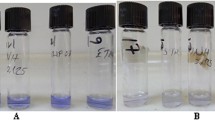Abstract
The aim of our study was to evaluate the performance of conventional drug susceptibility testing (DST) among the tuberculosis (TB)-specialized hospitals in China. A total of 40 hospitals participated in the external quality assurance program for assessment of DST results from each hospital. The sensitivity, specificity, and accuracy of DST were analyzed. The mean accuracy was 96.5% for isoniazid (INH), 95.8% for rifampin (RIF), 97.0% for ethambutol (EMB), 96.8% for ofloxacin (OFX), 97.1% for kanamycin (KAN), 96.1% for amikacin (AMK), and 93.6% for capreomycin (CAP), respectively. Of the 40 participating laboratories, 4 (10.0%) and 6 (15%) failed to achieve 90% accuracy for INH and RIF, respectively. In addition, six hospitals (15%) were confirmed as certified to provide reliable DST results for both first-line and second-line drugs. The certified proportion for DST dropped from 73.9% in the non-western region to 59.2% in the western region. The significant difference was observed in the certified proportion for first-line drugs between the western and non-western region (P = 0.013). Our results demonstrate that the quality of phenotypical DST is frequently unsatisfactory, with approximately one-third of participated laboratories failing to produce certified phenotypical DST results. In addition, the uncertified laboratories majorly come from the western region in China.

Similar content being viewed by others
References
World Health Organization (2018) Global Tuberculosis Report:2018
Xu C, Pang Y, Li R, Ruan Y, Wang L, Chen M, Zhang H (2018) Clinical outcome of multidrug-resistant tuberculosis patients receiving standardized second-line treatment regimen in China. J Inf Secur 76(4):348–353
Pang Y, Du J, Qin ZZ, Greenwald Z, Liu Y, Mi F, Zhao Y, Li L (2016) An overview on tuberculosis-specific hospitals in China in 2009: results of a national survey. Eur Respir J 47(5):1584–1587
Schon T, Miotto P, Koser CU, Viveiros M, Bottger E, Cambau E (2017) Mycobacterium tuberculosis drug-resistance testing: challenges, recent developments and perspectives. Clin Microbiol Infect 23(3):154–160
Jiang GL, Chen X, Song Y, Zhao Y, Huang H, Kam KM (2013) First proficiency testing of second-line anti-tuberculosis drug susceptibility testing in 12 provinces of China. Int J Tuberc Lung Dis 17(11):1491–1494
Du J, Shu W, Liu Y, Wang Y, Zhan Y, Yu K, Gao J, Li L, Pang Y (2019) Development and validation of external quality assessment panels for mycobacterial culture testing to diagnose tuberculosis in China. Eur J Clin Microbiol Infect Dis
World Health Organization (2012) Updated interim critical concentrations for first-line and second-line DST. World Health Organization, Geneva
Wu MH, Chiang CY, Deng YM, Wang TF, Jou R (2013) Proficiency of drug susceptibility testing for mycobacterium tuberculosis in Taiwan, 2007-2011. Int J Tuberc Lung Dis 17(1):113–119
Jou R, Chiang CY, Yu CY, Wu MH (2009) Proficiency of drug susceptibility testing for mycobacterium tuberculosis in Taiwan. Int J Tuberc Lung Dis 13(9):1142–1147
Kim SJ (2005) Drug-susceptibility testing in tuberculosis: methods and reliability of results. Eur Respir J 25(3):564–569
Yang X, Yuan Y, Pang Y, Wang B, Bai Y, Wang Y, Yu B, Zhang Z, Fan M, Zhao Y (2015) The burden of MDR/XDR tuberculosis in coastal plains population of China. PLoS One 10(2):e0117361
Wang L, Zhang H, Ruan Y, Chin DP, Xia Y, Cheng S, Chen M, Zhao Y, Jiang S, Du X, He G, Li J, Wang S, Chen W, Xu C, Huang F, Liu X, Wang Y (2014) Tuberculosis prevalence in China, 1990-2010; a longitudinal analysis of national survey data. Lancet 383(9934):2057–2064
World Health Organization. Automated real-time nucleic acid amplification technology for rapid and simultaneous detection of tuberculosis and rifampicin resistance: Xpert MTB. World Health Organization, 2013
Zhou M, Liu S, Li Q, Wang Q, Zhu M, Cao L, Wang D, Xu Y, Zheng T, Ye Q, Hu X, Zuo H, Pei X (2018) Drug resistance characteristics of mycobacterium tuberculosis isolates between 2014 and 2017 in Sichuan, China: a retrospective study. PLoS One 13(12):e0209902
Acknowledgments
This study was supported by the Innovation Alliance on Tuberculosis Diagnosis and Treatment (Beijing). We would like to thank all the staffs participating in this study in the tuberculosis hospitals.
Author information
Authors and Affiliations
Corresponding authors
Ethics declarations
Conflict of interest
The authors declare that they have no conflict of interest.
Ethical approval
Not required.
Additional information
Publisher’s note
Springer Nature remains neutral with regard to jurisdictional claims in published maps and institutional affiliations.
Rights and permissions
About this article
Cite this article
Shu, W., Du, J., Liu, Y. et al. External quality control of phenotypic drug susceptibility testing for Mycobacterium tuberculosis in China. Eur J Clin Microbiol Infect Dis 39, 871–875 (2020). https://doi.org/10.1007/s10096-019-03770-1
Received:
Accepted:
Published:
Issue Date:
DOI: https://doi.org/10.1007/s10096-019-03770-1




